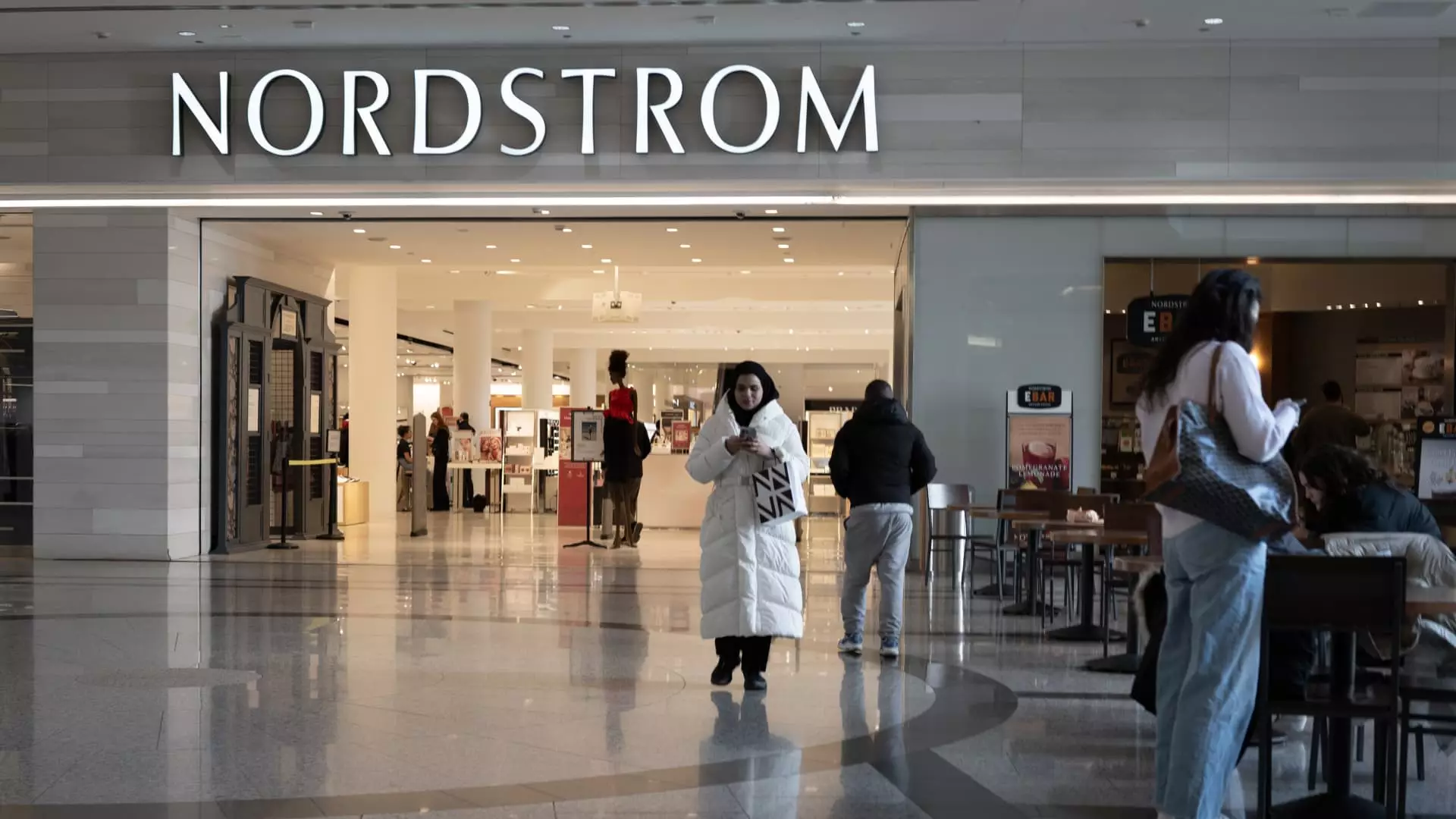Nordstrom, the iconic Seattle-based retail giant, reported financial results that surpassed Wall Street’s expectations for the third quarter of the fiscal year. The company achieved approximately 4% revenue growth year over year, supported by a robust demand for clothing, footwear, and activewear across both its flagship stores and the off-price Nordstrom Rack. However, while these numbers paint a generally positive picture, the retailer adopted a cautious approach to its full-year sales outlook, particularly as it prepares for the crucial holiday shopping season.
CEO Erik Nordstrom expressed optimism in the firm’s performance, remarking on the successful strategies implemented to engage discerning shoppers. Women’s apparel and activewear demonstrated impressive double-digit growth compared to the previous year, while sales in shoes, men’s clothing, and children’s apparel saw more modest gains in the mid-to-high single digits. Nevertheless, the company’s forward-looking statements indicate an awareness of shifting consumer behaviors, especially towards the end of October, which adds a layer of complexity to their financial prospects.
Despite the encouraging quarterly results, Nordstrom’s full-year revenue expectations remain conservative, estimating sales to be flat or up slightly, compared to prior predictions that envisaged a potential decline in sales. This cautious stance signals an understanding of the broader retail landscape, where fluctuations in consumer spending habits have become increasingly pronounced, particularly regarding discretionary purchases.
In recent weeks, other major retailers, including Walmart and Target, have reported similar trends of caution among consumers who are prioritizing essential needs over luxuries. Such sensitivities in spending are pivotal as Nordstrom looks to maintain momentum through the busy holiday shopping season, a critical period for garnering significant sales.
In the fiscal third quarter, Nordstrom’s reported net income totaled $46 million, translating to 27 cents per share—lower than the previous year’s $67 million or 41 cents per share. While the revenue increased from $3.32 billion to $3.46 billion year over year, the reported figures reflect challenges in maintaining profitability amidst rising costs and competitive pressures.
Comparable sales, which indicate performance across Nordstrom’s brands, notably exceeded analyst projections with a growth of 4%. In an age where many discretionary retailers are struggling, this growth is commendable. However, other competitors, such as Macy’s, are grappling with setbacks including a reported decline in their third-quarter sales, which raises questions about the broader competitive dynamics within the retail sector.
Another critical aspect affecting Nordstrom’s performance this quarter was the calendar shift concerning its Anniversary Sale. Last year, the sale spanned eight days within the reporting quarter, whereas this year’s event featured only a single day, dampening net sales by an estimated 1%. This nuanced detail underscores the complexities that retailers face in planning promotional events and adapting to changing shopping patterns—a challenge that could influence revenue potential, especially during peak shopping periods.
Nordstrom has steadfastly invested in its off-price retail division, Nordstrom Rack, as a means to foster growth and expand market presence. During this quarter, both the namesake and Nordstrom Rack showed comparable sales increases of 4% and 3.9%, respectively. This consistency indicates that the off-price segment continues to attract budget-conscious consumers, proving to be a critical component in hedging against sales pressures from the flagship stores.
The retailer also made strides in enhancing its digital retail capabilities, with e-commerce representing roughly one-third of total sales and witnessing a year-over-year increase of 6.4%. Investments in website optimization and the introduction of streamlined shopping features suggest Nordstrom is keen on leveraging technology to elevate the customer experience, which has become a vital differentiator in contemporary retail.
Nordstrom’s recent quarterly performance illustrates a complex landscape for the retailer. While it demonstrated solid growth amidst a challenging retail environment, the cautious full-year sales forecast reflects the need for adaptability in response to evolving consumer behavior. As Nordstrom further invests in both its traditional and online business models, its future success will rely heavily on balancing marketing strategies, customer engagement, and operational efficiencies to navigate the uncertainties ahead.

